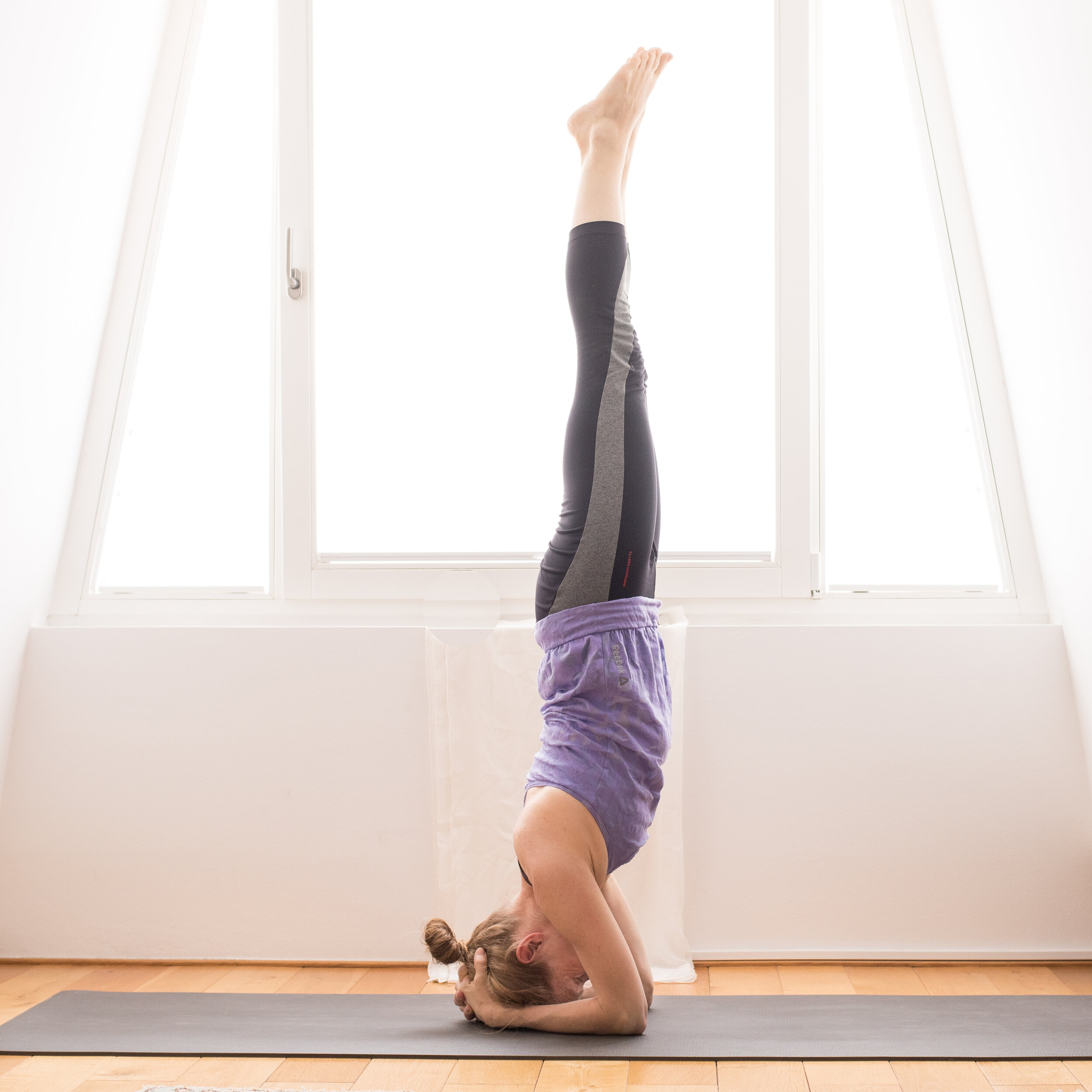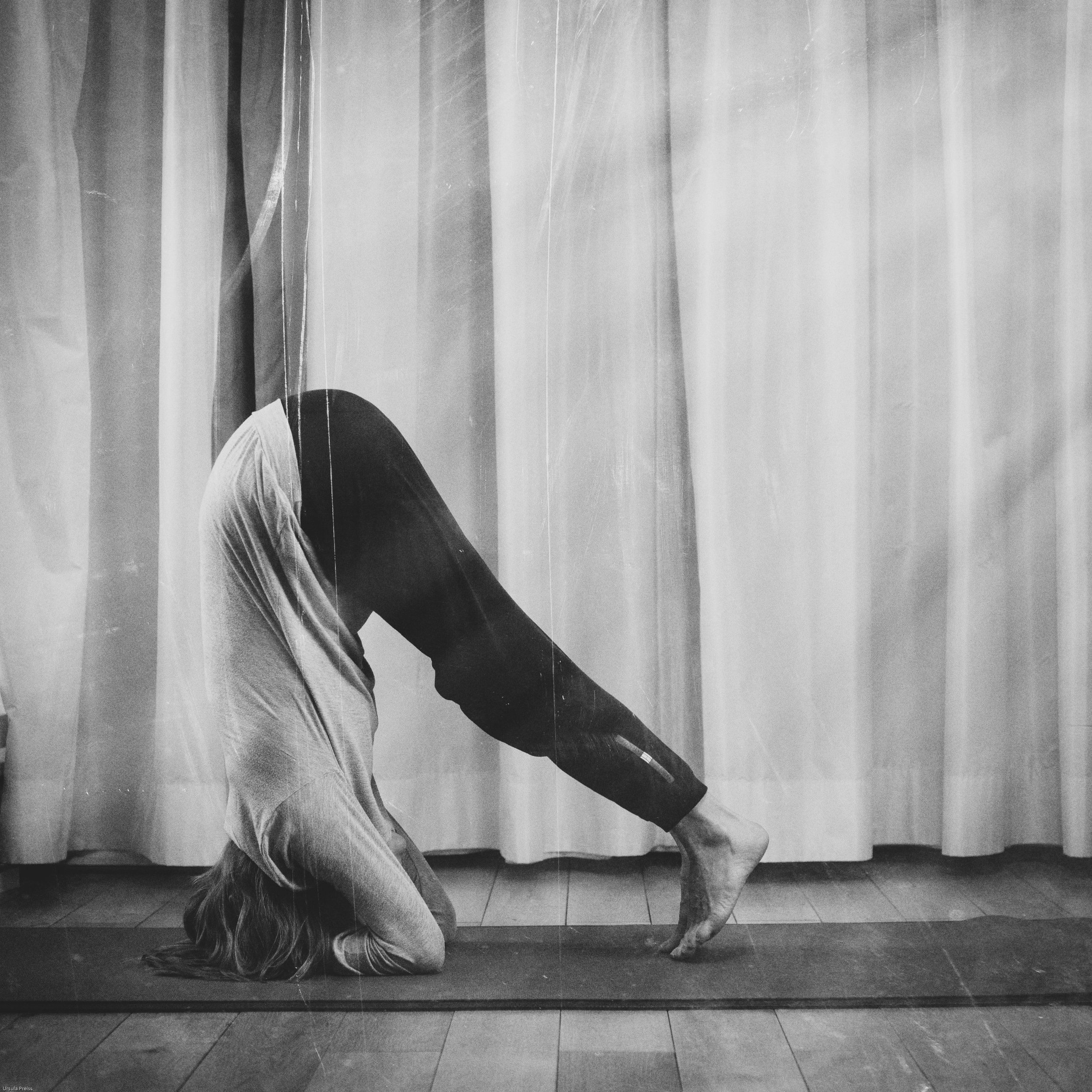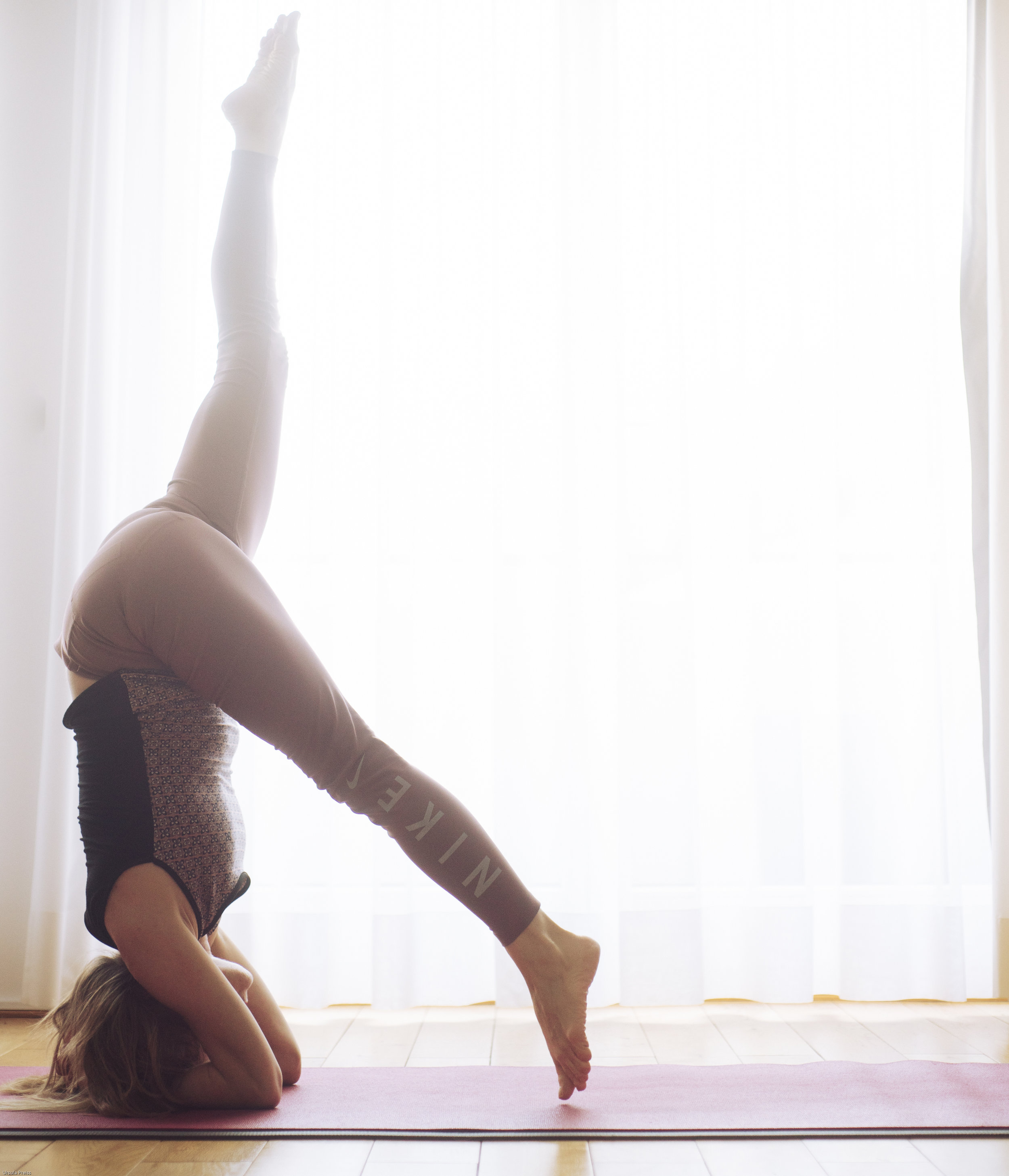Sirsasana
Sirsasana, Okt 2020
Last year I went to Sivananda yoga classes. Sirsasana is the first asana of the series they teach. It’s supposed to be held for 5 minutes. In the beginning of each class the mind and body are still fresh and full of energy. It was easier to hold this asana longer than I usually do when I practice Ashtanga yoga. In the Ashtanga yoga series headstand is an asana of the closing sequence. After an exhausting practice I only wanted to finish my practice. Five breaths and out I was of this pose……
To hold an asana for 5 or 10 breaths or 5 minutes is a difference. If one holds headstand for 5 breaths it’s doable with a bad posture. It’s possible to compensate a bad technique with strength. If headstand is held longer this becomes difficult. The more correct the headstand is performed the easier it is and the easier it also is to hold it longer.
The one main mistake I see everywhere in classes and online is that the elbows are too far away from each other. My arms are almost parallel. They don’t form a triangle. When the bandhas (pelvis floor and abdomen) are engaged balancing is easier.
The Sivananda yogis offer headstand workshops that last 30 minutes. Within this time frame the students learn headstand. I learned it that way. Thank you it saved me a lot of time and frustration. In order to learn headstand one must want it. Someone must teach the correct technique. A bit of strength is necessary, too. That’s all.
To hold this pose up to 10 minutes is something else as written already.
My goal is to hold sirsasana for 5 minutes. Only when held longer this inversion can benefit for the body.
I found out yesterday:
My fingers hurt due to my rings.
To set a timer for 5 minutes without getting informed about the time is as if I were in a time vacuum.
Then I used a timer that indicates 5 intervals. It’s an App called multi timer that accompanies my practice these days. This interval timer is very useful.
I held sirsasana for 2 long minutes. I’m curious what is possible today.
I’m sure that holding sirsasana longer will improve this pose. It’s also a preparation for the more advanced inversions like pincha mayurasana.
The Sivananda yogis know a lot of variations, mainly the legs are in different positions.
The Ashtanga yogis know also a lot of variations, yet mainly the arms are in different positions.
Let’s keep practicing.
Headstand
Sirsasana July 2020
As I do this handstand training on omstars.com, headstand becomes interesting again.
To hold this pose at least up to five minutes will surely better the ability to balance.
During the closing sequence of Ashtanga Yoga, after the second series, headstand is done a bit differently than on the picture. One shall lift the head. The chin moves to the chest. I found very very few videos on that movement. Kino had produced one. In order to lift the head, the arms must lift the body. this creates room for the head. This tiny movement requires a lot of strength. To bring the chin to the chest is not a huge movement, yet it’s a challenge.
Every asana gets more difficult when held longer.
For most asanas variations can be exercised that are more challenging.
How to get into an asana can be easy or difficult. To get into headstand with straight legs is surely more challenging than getting into the pose with bent legs.
Headstand can be rather relaxing.
How to balance:
The finger hold the head.
The arm position must be correct. It’s often said that the elbows shall form a triangle. Very often yogis have the elbows too far away from each other. My arms are rather parallel.
An even breath helps to balance.
Calm eyes help to balance.
The bandhas (abdomen and pelvis floor) shall be engaged. This gives a certain lightness.
Pressing the wrists against the floor stabilizes the pose as well.
Last year I went to Sivananda yoga. They always do handstand in the beginning of the asana series. They hold sirsasana rather long and do variations. Sirsasana is such a classic asana it’s worth to get to know this pose a bit better.
I knew a person who did only headstand, no other asana. He has found his asana, for sure.
How to get into headstand
Headstand can be learned in one session.
Here are the steps:
Proper preparation is everything. Take care that your elbows are not too far away from each other. My arms are almost parallel. This is very important.
Walk with your feet to your body. It’s not necessary to have straight legs. Finally the back should be parallel to the wall.. (Picture #1)
Bend one leg and bring it close to the body. Only one foot is the floor. The weight should be on the arms and not on that foot. (Picture #2)
Jump a tiny bit to bring both leg in the same position. The closer you walked the feet to the body the less you have to jump. It’s a tiny dynamic movement. (picture #3)
There are three possibilities to balance: The thumbs behind the head can press against the head. Breathe evenly. Engage the bandhas. Especially the last point gives a lot of stability. When no feet is on the floor the pose is mastered. Now only the legs must move upwards. This can be done very slowly. But that’s it.
People with high blood pressure should avoid this asana.
Sirsasana is an inversion and a balancing asana. Mastering this pose gives a lot of self-confidence.
For those who are interested in beauty: Headstand is a good face lift. :)
Headstand has a lot of positive effects on the body:
It strengthens the core muscles
Blood circulation improves
It improves digestion and brain function
I think it makes sense to learn first shoulder stand, then headstand, then forearm stand and then handstand.
Challenges can be to try variations and to hold this asana longer. I learned from people who held the pose for one hour. For me 1 to 5 minutes are enough. In order to experience the above mentioned positive effects this pose must be held longer than 5 breaths. One should aim for 25 breaths minimum.
Headstand
People who don’t practice yoga usually combine yoga with lotus pose (padmasana) and headstand (sirsasana).
In Ashtanga yoga a headstand is part of the closing sequence. At the end of second series seven different forms of sirsasana are exercised.
Headstand can be learned in one session.
In the movie ‘The breathing God’ one can watch how B.K.S. Iyengar teaches a man headstand. This man had never done yoga before, it was the film maker. He was able to get into headstand very quickly. Within 10 minutes or less this man got into headstand alone and he could hold it. Iyengar only told him what to do. There were no hands on adjustments. The situation was challenging as the student had a lot of viewers.
I learned it in one session, too. Years ago I practiced with the Sivananda people. Sirsasana is the first asana out of the twelve basic ones in their system. They know how to teach it.
Usually yoga beginners have such a huge respect and even fear to get into headstand. It’s not necessary. It’s very unlikely that one falls out of this pose. I fell out perhaps twice within decades. Nothing happened. The folded hands behind the head prevent that one falls backwards. Nevertheless I always want to have space enough in front of me in case I fall. If one falls against a wall one might injure oneself.
The main two mistakes:
Most people who struggle with this pose have the elbows too far away from each other. My arms are almost parallel on the floor. The wrist press into the floor.
Never ever go to a wall!!!! Don’t do it. Fear will become worse. I’ve seen it so often.
There are many possibilities to get into the pose. It’s easier when the legs are bent, when moving into this asana. I’m glad that I can get into the pose with straight legs again, yet this is a bit more challenging.
step: Learn to get into a basic handstand.
step: Hold this asana longer, 5 minutes could be a doable goal. Self-confidence will grow.
step: Exercise variations.
In order to check if the body is parallel to the wall one must take a picture. The yoga poses feel differently than they look like. A picture tells the truth.
I plan to go to a Sivananda yoga class again, after so many years. I mean they taught me how to get into headstand. Perhaps they can teach me pincha mayurasana, too.








